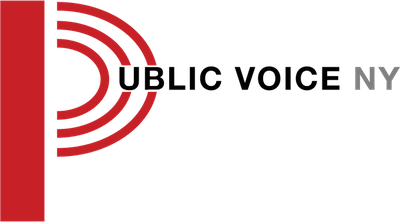

At this moment in our history, nonprofit knowledge truly matters. Political debates continue to threaten many of the basic norms of our democracy. And, sadly, those norms are much more fragile than we knew. As the 45th president’s term continues, these challenges are increasing.
Truth is particularly threatened. Marketing may not have the best reputation as a defender of truth. But that’s precisely why the next several posts in this blog will focus on the ways marketing can help your NPO counter false information. Posts 1 and 2 in this series offer some analysis of how the truth is under assault. Posts 3 and 4 describe ways to gain insight into why people oppose your cause. The posts also lay out practical tactics for what organizations can do to support the truth, advance their cause, and strengthen our democracy.
Facts are vital – especially in an age of lies.
The truth matters – for your clients, your cause, your community, and the country. Unfortunately, in this age of “truthiness” and “alternative facts,” we are not only divided in our beliefs about what to do about the problems we face. Now, what we believe is true divides us as much as our ideas about what policies will improve our country.
Worse still, we don’t even agree on how much the truth matters.
It takes preparation to be effective in arguments over what is true and what isn’t. Fake news and incorrect info can spread incredibly fast. It won’t help to think about what you should or could have said when it’s too late to have an impact.
Different forms of falsehood – and how nonprofit knowledge can refute them:
False is false is false, but distinguishing among the types of disinformation helps you figure out the best ways to set the record straight.
-
False Facts
The problem: Unfortunately, the way our brains process ideas creates a built-in challenge. To understand what we see, hear, or read, we first automatically accept something. Only then do we reflect and decide if we agree or believe it. In an age of info overload, our brains get swamped. And a high volume of lies makes it even harder to filter effectively.
Solutions: Get ahead of the curve. Document the truth and broadcast it widely. Adjust the tone of your response to distinguish between those who deliberately spread wrong info and those who spread it inadvertently. Most important, Never, ever repeat a lie, even to refute it. The more something is repeated, the more it is accepted as real. State the truth as best you know it, then give the documentation. Here’s an example, Napoleon was actually taller than average for men of his time. The myth arose because in the French units in use at the time, 5’2” is over 5’ 6” in standard US units.
False Doubt
The problem: Those who manufacture doubt create mistrust of the truth, while evading responsibility for what they are doing. This kind of distortion shifts the burden of proof from those attacking the truth onto those upholding the truth. An example of this is Holocaust denial.
Scientific and medical information is especially vulnerable to false doubt. The data can be complicated, and experts are careful to talk about evidence rather than making absolute statements. The long battle to get people to accept the reality of climate change is a clear example of this.
Solutions: Gather as much information – from as many credible sources – as possible. It can also help to find good ways to visualize data and to use metaphors that don’t overly dumb down the realities. Finally, it makes a big difference to provide first-hand experience to as many influencers as possible.
False Equivalencies
The problem: These untruths are sneaky because they misuse accurate info. However, they distort the context, often to minimize culpability. Think of kids saying things like “he did it first,” or “yeah, but look what she did.” Not all wrongs are equally bad.
Solutions: The first step in countering this kind of distortion is to label it for what it is. The second step is to weigh the size or the seriousness of the things being compared. Data visualization can be helpful with this as well.
Both-side-ism:
The problem: Typically, this refers to reporters covering each “side” in a dispute, without weighing in on the truth or falsehood of the antagonists’ positions. However, both-side-ism can also creep into public debates that affect community and policy decisions. It creates an illusion of fairness because “both sides” get a chance to be heard, even though one of the positions is untruthful. Both-side-ism can come into play, for example, when the testimony at a public meeting includes false information about the impact of a nonprofit’s clients on a neighborhood.
Solutions: Be alert to the use of both-side-ism to spin public discussions. And challenge media and officials to present factual information separately from airing opposing opinions about those facts.
Getting a marketing payoff from this extra work:
It takes extra effort to prepare to counter falsehoods. However, it’s easier if gathering this kind of knowledge becomes part of an ongoing routine. You can start by setting up a digital folder of relevant information and then make updating it part of regular staff / volunteer meetings.
Luckily, there is a silver lining to this extra work. In addition to improving your nonprofit’s ability to stand up to deceptive info, this same knowledge can boost your content marketing. Here are four ways to make it payoff:
- Add fresh content to your website
- Make your e-newsletters more substantive
- Add to your credibility on social media
- Enhance print material, such as annual reports, brochures, etc.
“Falsehood flies, and the truth comes limping after it; so that when men come to be undeceived, it is too late…the tale has had its effect.” – Jonathan Swift
Since 1710 when Swift published these words in his essay on Political Lying, they have been paraphrased and re-quoted many times. Unfortunately, they still ring true. Now more than ever, t is essential to amass nonprofit knowledge and be prepared to use it.
This post was updated on January 25, 2020.
Here are some helpful resources related to our series, Upholding Truth in an Age of Lies:
JAN
2017
